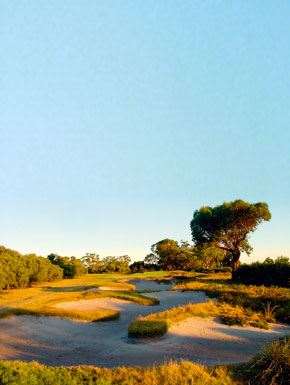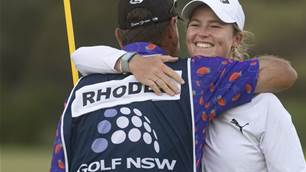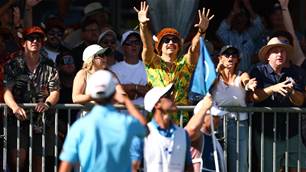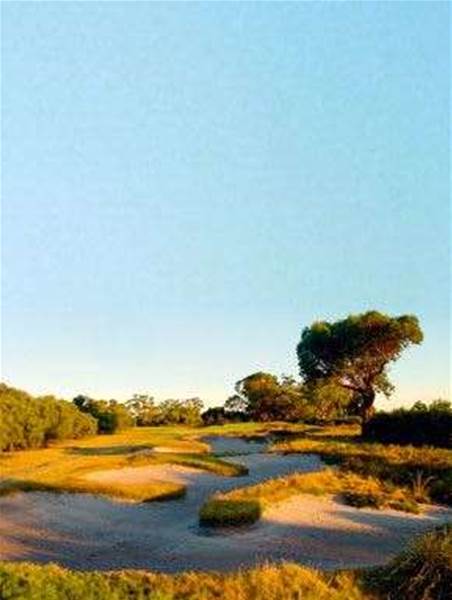In golfing terms, Melbourne truly ranks with the greatest of destinations – and it sometimes takes an outsider, or a bunch of them, to remind us of that.
If Royal Melbourne is the undisputed greatest hit of the Sandbelt, the Heath is the cool No.2 beloved by connoisseurs. It’s easy to admire Royal for its grand sweep; what golfers appreciate about Kingston Heath is how such a small, relatively flat piece of land can produce such a great layout.
 Melbourne hosts for a second time, former players Fred Couples and Greg Norman back as team captains.
Melbourne hosts for a second time, former players Fred Couples and Greg Norman back as team captains.Images: Victoria Tourism
In the earlier context of routing as film script, Kingston Heath is a terse thriller, full of short, sharp and unexpected turns. Having visited the course on two previous occasions for professional tournaments, the way the sequence of holes flowed from the green to the next tee still came as a surprise. The Heath’s bunkering, another Mackenzie product, is the attribute that earns the most notice, but the routing was the work of Dan Soutar, an expat Scot who was among Australia’s first great competitive golfers. The way the course moves from short to long holes provides an utterly complete test of shot-making.
Those bunkers, though, cannot be ignored. It’s somewhat weird for a golfer to think of a hazard in affectionate terms, but the swirling shapes and sharp edges of the Heath’s bunkers have an undeniable artfulness to them. They’re the best example of Sandbelt bunkering, the distinctive style envied all over the world. There’s a notion that such bunkers are only possible in the unique ground of the Sandbelt, although that’s refuted by course architects and builders.
Mackenzie left his mark in the sand at the Heath, and one awesome hole. His 15th is perhaps the best par-3 in Australia, the kind of hole you spend the entire front nine looking forward to. By the time you reach this hole, you’ve already played another great par-3, the pint-sized 10th, and the 5th is a tremendous one-shotter that’s somehow only the third-best on the course. The 15th plays uphill – a rarity among great par-3s – a mere 140 metres, but to a green with yawning bunkers either side. The slope on the putting surface is near funhouse, particularly if the putt is from above the hole.
The 15th leads to a great closing run of holes: the par-4 16th, with its blind drive and double green it shares with the 8th, to the long par-4 17th, which winds its way uphill to its tilted saucer of a green, then the finisher, another long par-4 to test the golfer to the line, with a tough green that presently holds the distinction of being the last one that Tiger walked off in victory. Right after my round at the Heath, I learn that Woods’ potential return to Melbourne for the Presidents Cup has been clouded by injury – a shame for him, no doubt, because he has to travel a long way to play golf like this.
– Jeff Centenera
The author travelled to Melbourne as a guest of The Presidents Cup 2011. Presidents Cup Travel still has several travel packages to the event this November including tickets, golf and accommodation (1300 300 756,
www.thepresidentscuptravel.com
Related Articles

Lightning and low rounds at NSW Women’s Open

"More pointless than Pokémon": Tomorrow's Golf League critiqued, and roughly













